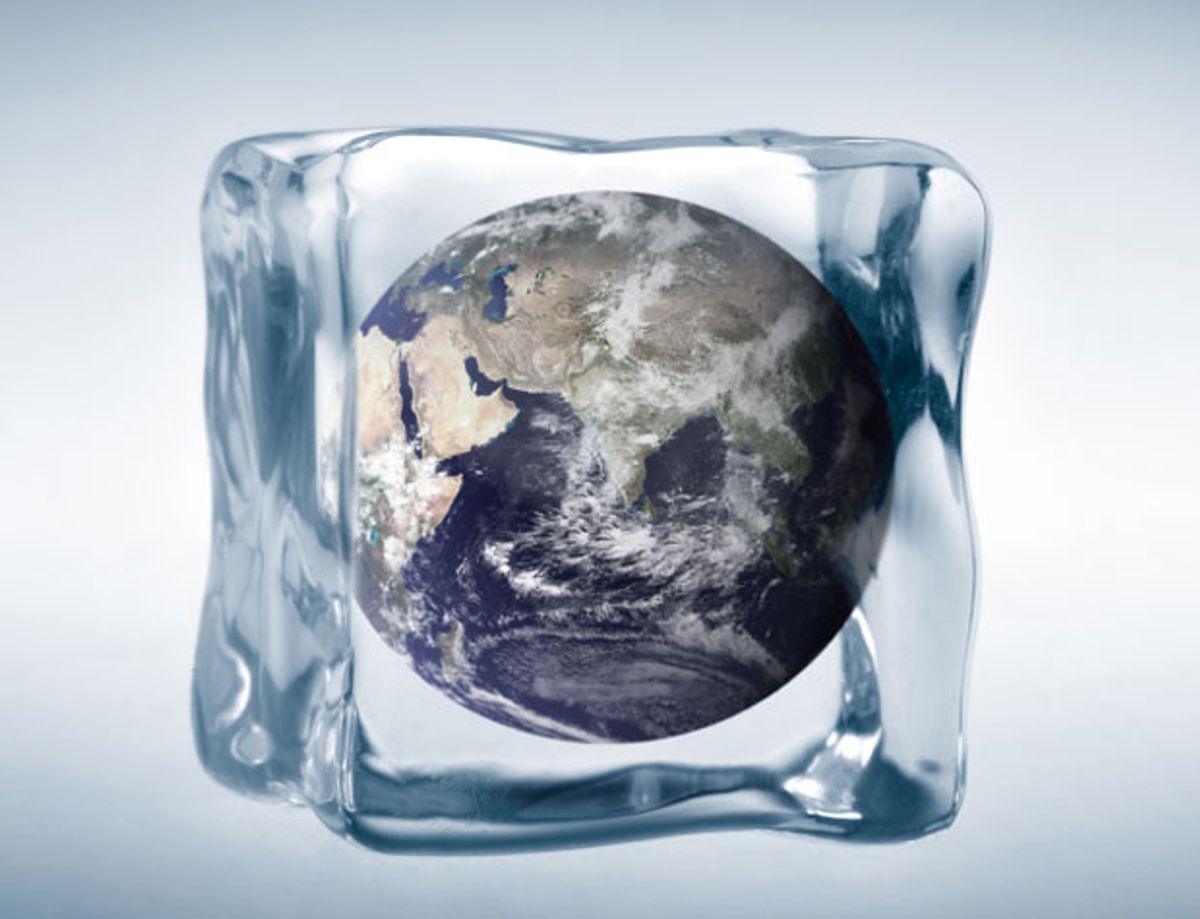The underlying problem has to do with uncertainties in estimation of annual changes in carbon dioxide levels. Yearly temperatures are inferred directly from changes in the isotopic composition of water deposited annually in snowfall; yearly accumulations are fairly easily distinguished because each year the top surface of the snow melts and then refreezes, forming a kind of crust called "firn." But the air bubbles in which carbon dioxide is trapped tend to diffuse through the crust, making it difficult to match up the bubbles wit the years in which they originally were trapped. As a companion commentary to the Science article explains, "Over the top 50 or 100 m of an ice sheet, the snowpack (firn) gradually becomes denser before it becomes solid ice containing air bubbles. Air diffuses rapidly through the firn, and the trapped air is therefore younger than the surrounding ice. In places with little snowfall, the age difference can be several thousand years. The age difference cannot be reconstructed perfectly, leading to uncertainty in the age of air…"
In the work reported on Friday, the multi-national team of European scientists used a proxy to better estimate the time of air bubble formation in the Antarctic core EPICA Dome C. Whereas the original analysis of that core had found changes in carbon dioxide lagging temperature changes by an average of 800 years in the last deglatiation, plus/minus 600 years, the new analysis halves the lag and cuts the uncertainty by a factor of three. "Their analysis indicates that CO2 concentrations and Antarctic temperature were tightly coupled throughout the deglaciation, within a quoted uncertainty of less than 200 years," says commentator Edward J. Brook, of Oregon State University, Corvallis.
How much of an impression will the new results make? Will they materially change the chemistry of the debate over human-induced climate change and climate policy? Doubtful.
For one thing, in part because of the complexity of the scientific methods used in both the original study and the new re-analysis, it will be easy for stubborn skeptics to believe that the scientists have simply picked a method that gives them the result they want. Second, much as one hates to trot our a tired cliche, the new results may raise more questions than they settle. Even if the changes in the two variables are indeed much more tightly linked, what co-factors are responsible for the whole pattern?
Brook puts it like this in the concluding paragraph of his commentary: "The ultimate question is what mechanisms influence both Antarctic climate and CO2 concentrations on such intimate timescales. Many have been discussed, and many are plausible, including changes in CO2 outgassing from the ocean due to changes in sea ice, changes in iron input to the ocean that influence CO2 uptake by phytoplankton, and large-scale ocean circulation changes that cause release of CO2 to the atmosphere. Deciding which are viable has proven difficult…"
Image: iStockphoto




